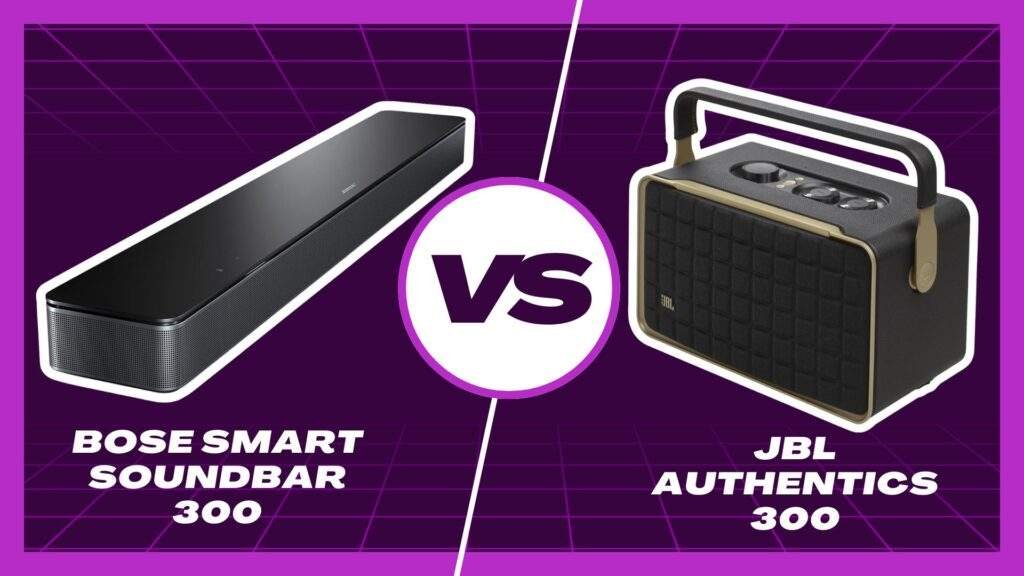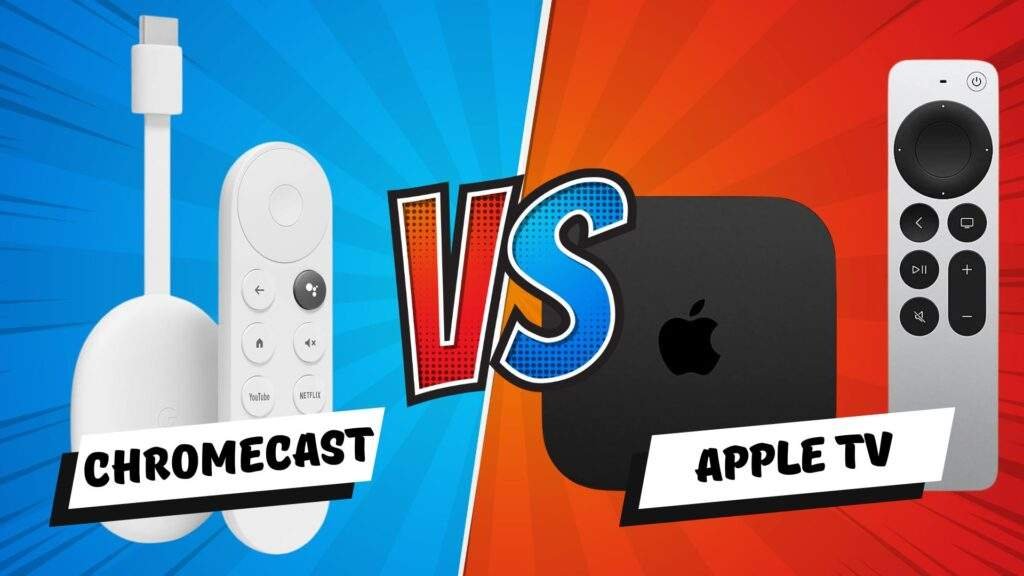Sell Magic Cards Online by mastering every step. Discover insider tips on valuation, promotion, and pricing for consistent success.
Table of Contents
Introduction
Magic: The Gathering (often shortened to MTG) is one of the most enduring and beloved trading card games in the world. Since its debut in 1993, MTG has drawn in millions of players, collectors, and enthusiasts who enjoy its deep strategic gameplay, unique artwork, and ever-evolving expansions.
Over the decades, many cards have gained considerable value, becoming sought-after collectibles that can fetch high prices on the secondary market. If you have a stack of Magic cards hidden in a closet or have been actively playing and collecting, you might be sitting on a treasure trove without even realizing it. Learning how to sell your Magic cards online can help you unlock extra income, clear clutter, or even fund your next hobby venture.
In this comprehensive guide, you will discover a start-to-finish approach that covers everything from evaluating your Magic: The Gathering collection to choosing the right online marketplace, setting competitive prices, running effective marketing campaigns, and leveraging tools to streamline your business operations.
Whether you want to become a casual seller or establish an online store that caters to avid MTG enthusiasts, there are important steps and strategies to consider. You will also learn how email marketing platforms—such as GetResponse and Mailchimp help grow your customer base (both offer a free trial). Furthermore, for sellers who plan to use Amazon’s Fulfillment by Amazon (FBA) model, tools like Helium 10 are invaluable for researching, optimizing, and staying ahead in a competitive marketplace.
This blog post aims to be your roadmap for turning your beloved Magic cards into a profitable online venture. You will explore best practices, discover common pitfalls, and see how to harness digital tools that help you stand out in a saturated e-commerce space. By the end of this in-depth guide, you will be equipped with the knowledge, tactics, and resources to confidently sell Magic cards online and grow your newfound business endeavor.
The Magic: The Gathering Market
What is Magic: The Gathering?
Magic: The Gathering (MTG) was created by Richard Garfield and published by Wizards of the Coast. In this game, players take on the role of powerful wizards (Planeswalkers) and battle each other with custom decks. The game has grown popular because of its fun strategy, rich story, and the chance to collect rare cards.
Why do people love MTG?
- New sets with fresh themes come out often.
- There is a big community of players and collectors.
- There are lots of competitive events, like tournaments and meetups.
Because of all this, MTG cards are always in high demand. Whether you are selling a rare card or a big collection, there are buyers out there. It’s important to know which cards are valuable.
Card Condition and Grading
The condition of a card is very important. A small scratch or bent corner can lower the card’s value. Most collectors want cards that are in “Near Mint” or “Lightly Played” condition. Even older cards that are a little worn can still be worth a lot, but the condition matters.
Grading services like PSA and Beckett can give cards an official grade. However, this can be expensive if you have many cards. If you have valuable older cards, grading them can be a good idea. For modern cards, you can often assess the condition yourself using grading tools like TCGplayer.
Why Sell Magic Cards Online?
Selling Magic cards online lets you reach people all over the world. Whether you’re selling rare cards, common cards to finish a deck, or sealed boxes, there are many buyers. Selling online opens up a bigger market than local sales. Plus, it’s easier to manage your inventory and check prices online, so you can stay competitive without needing a physical store.
Step-by-Step Guide to Selling Magic Cards Online
This section covers a start-to-finish approach to help you transform your MTG cards into a profitable online business. Each step is designed to help you understand the market, organize your inventory, use effective marketing techniques, and scale your operation sustainably.
1. Evaluate Your Collection
Begin by sorting your cards. You can categorize them by:
- Expansion set
- Rarity (common, uncommon, rare, mythic rare)
- Color (white, blue, black, red, green)
- Specialty sets or limited-run promos
Sorting by expansion and rarity is particularly helpful if you plan to bulk-sell or list in large lots. Popular sets like Modern Horizons, Commander Legends, or older sets like Alpha and Beta may attract higher prices. Keep an eye out for any misprints, foil variations, or promotional cards, as these can have unique market values.
2. Determine Card Condition
Assessing the condition accurately is crucial. If you are selling through a platform that enforces grading standards, match each card to the condition categories. Common condition categories include:
- Near Mint (NM)
- Lightly Played (LP)
- Moderately Played (MP)
- Heavily Played (HP)
- Damaged
Buyers often rely on sellers to be transparent. If you exaggerate a card’s condition, you risk returns and disputes. Conversely, underestimating could lead to leaving money on the table. Be honest and precise.
3. Research Card Values
Before you list any card, you need to understand its current market value. Several resources can guide your pricing:
- TCGplayer
- eBay completed listings
- Cardmarket (Europe)
- MTGPrice or MTGStocks
Cross-referencing multiple sources can help you identify if a card’s price is stable or trending up or down. Don’t forget to factor in condition. A Near Mint card might be worth significantly more than the same card in Moderately Played condition.
4. Explore Different Selling Platforms

You have multiple avenues to list your Magic cards. Each platform has its own advantages, fees, and audience. Understanding which platform aligns best with your goals will save you time and increase profits.
TCGplayer
TCGplayer specializes in collectible card games (CCGs). It offers extensive pricing data, buyer and seller protections, and a large user base specifically looking for MTG, Pokémon, and other card games. Fees are relatively competitive, and the platform handles payment processing, so you don’t have to worry about setting up anything complicated.
eBay
eBay is a global marketplace with a broad audience. It’s a good option if you want to reach international buyers or run auctions for highly collectible, rare cards. On the downside, eBay fees can add up, and it has a broad user base, meaning you might have to compete with other products for visibility.
Amazon
Amazon can be suitable for sealed products, like booster boxes or pre-constructed decks. Individual card listings are trickier to manage, though some sellers do it. If you plan to fulfill via Amazon (using FBA), you’ll have to navigate additional guidelines, storage fees, and shipping specifications.
Local Game Stores
Some local game stores buy collections or specific cards, but you typically won’t get top market value this way. This might be a fast approach if you don’t want to deal with the intricacies of online sales, but you usually trade off convenience for a lower payout.
5. Price Your Cards Strategically
Pricing cards is both art and science. You want to remain competitive but also ensure you’re making a profit:
- Check recent sales for the same card in comparable condition.
- Consider the platform’s fee structure. Higher fees mean you may need to adjust the price upward or accept a smaller margin.
- Factor in shipping. If you plan to offer free shipping, fold that into your prices.
For highly sought-after cards, you might set a slightly higher price if you believe demand outstrips supply. For bulk cards or less popular sets, consider volume discounts or selling in bundles.
6. Create High-Quality Listings
Clear, informative listings can make or break a sale. For single cards, provide:
- Clear photos or scans. Show both front and back.
- An accurate condition rating.
- Mention of any notable attributes (promo, foil, signed, or misprint).
For large bundles or sealed products:
- List the contents if possible, or at least the main highlights (such as how many rares or mythics).
- Describe the overall condition of the bulk lot.
- If selling sealed boxes, ensure the packaging is intact and well-protected.
7. Decide on Fulfillment Methods
Shipping your cards can be straightforward or complex, depending on the volume:
- Simple envelope with top-loader: Ideal for single cards or small sets of less expensive cards.
- Bubble mailer: Offers more protection, recommended for mid-value cards.
- Box with padded interior: Suited for bulk sales, higher-value cards, or sealed products.
Provide tracking where possible to protect both you and the buyer. If you decide to offer free shipping, incorporate that cost into your prices.
8. Market Your Sell Magic Cards Online Venture
Once you start listing, you need to attract potential buyers. A strategic approach to marketing can set you apart from hundreds of other sellers.
Social Media
Platforms like Facebook groups, Reddit, or Instagram can be effective places to show off your rare cards or announce new listings. Be mindful of each platform’s rules regarding sales posts and spam.
Email Marketing
Email marketing remains one of the most cost-effective ways to communicate with your audience. If you plan to turn your MTG side hustle into a more substantial business, building an email list of interested buyers can help you sell new inventory quickly. For instance, you can offer subscribers:
- Early access to new listings
- Exclusive discounts
- Updates on pricing trends
9. Gather Feedback and Build Reputation
Positive feedback or reviews are critical to building trust with potential buyers. Encourage buyers to leave a rating or review after a successful transaction. Address any disputes professionally and swiftly to maintain a good seller rating on your chosen platform.
10. Scale Your Operation
If your online sales prove successful, you may consider scaling. Potential scaling strategies include:
- Purchasing collections from other players who are looking to offload cards.
- Expanding to new marketplaces or setting up your own website.
- Automating processes, such as inventory management and shipping, through dedicated software or marketplace APIs.
- Utilizing email marketing and social media marketing at a higher level to bring in more consistent sales.
The Role of Email Marketing in Selling Magic Cards
Marketing your MTG cards effectively can significantly increase your revenue. While social media and marketplaces have their place, email marketing is a highly targeted, cost-effective way to engage potential buyers. Building a list of subscribers interested in Magic: The Gathering ensures your promotional messages land directly in the inbox of people most likely to buy.
Why Email Marketing Matters for Card Sellers
Email marketing offers several benefits over other forms of outreach:
- Direct Communication: Rather than waiting for someone to visit your store or social media page, you can proactively reach them.
- Personalization: You can segment your subscribers based on purchase history or card preferences (Commander players vs. Standard players, for example).
- Automated Campaigns: Set up triggers for welcome emails, restock alerts, or special promotions.
- Ownership of Audience Data: Unlike on social media, you have direct control over your email list.
Choosing the Right Email Marketing Platform
Both GetResponse and Mailchimp are popular choices for businesses and individuals. They each offer a free trial, letting you test their features before committing. Below is a table comparing the two platforms:
| Feature | GetResponse | Mailchimp |
|---|---|---|
| Ease of Use | Intuitive drag-and-drop editor; user-friendly for beginners. | Simple interface; well-known templates. |
| Automation | Comprehensive tools (autoresponders, advanced workflows). | Strong automation features but more tier-dependent. |
| Pricing | Affordable tiers; flexible for growing lists. | Free tier with limited features; can get expensive with larger subscriber counts. |
| Integrations | Integrates with popular e-commerce, CRM, and CMS platforms. | Extensive integrations for various apps and software. |
| Unique Selling Point | Includes extra features like landing page creation and webinar tools. | Known for its intuitive design and brand recognition. |
| Pros | – All-in-one platform (landing pages, funnels, etc.) – Advanced automation – Good deliverability | – Familiar interface for many – Wide user community – Robust free plan for starters |
| Cons | – Some features may be too advanced for basic email needs – Mid-tier plans can add up | – Can become pricey for larger lists – Some automations locked behind higher-priced plans |
Both platforms allow you to manage subscriber data, create targeted campaigns, and use analytics to track open rates and click-through rates. If you’re new to email marketing, the free trial on each platform provides an opportunity to explore features like list segmentation and automated workflows without immediate financial commitment.
How to Set Up Basic Email Funnels for Magic Card Sales
- Capture Leads: Use a signup form or pop-up on your online store or blog. Offer an incentive like “5% off your first purchase” or “Exclusive pricing updates on rare cards.”
- Welcome Emails: Send an automated welcome email series. Introduce yourself, the types of Magic cards you sell, and how you can add value (e.g., deck-building guides, upcoming restock alerts).
- Ongoing Newsletter: Share updates, new product arrivals, price changes, and relevant Magic: The Gathering news.
- Segment Lists: Separate subscribers based on preferences or past purchases. If you know certain subscribers are more interested in vintage cards, send them relevant updates.
- Promotions and Discounts: Occasionally offer special discounts or early access to new listings to keep subscribers engaged.
By maintaining an email list, you are creating a direct channel to your most interested buyers. This strategy can dramatically improve your selling velocity, especially when you have new cards or limited-edition products to offer.
Leveraging Helium 10 for Amazon FBA
Selling Magic cards on Amazon can be profitable if you handle sealed products, bulk sets, or bundles that appeal to broader audiences. However, navigating Amazon’s ecosystem can be challenging, especially if you’re unfamiliar with FBA (Fulfillment by Amazon) requirements, competitive listings, and keyword optimization. This is where Helium 10 comes into play.
What Is Helium 10?
Helium 10 is an all-in-one software suite designed primarily for Amazon sellers. It offers tools for:
- Product Research: Identify trending or profitable products (in this case, it might be sealed MTG booster boxes, Commander decks, or special sets).
- Keyword Research: Optimize your listings with the right keywords to appear in more relevant searches.
- Listing Optimization: Use the platform’s editor to craft product titles, bullet points, and descriptions that convert.
- Competitor Analysis: Keep an eye on price points, best-seller rankings, and inventory levels of competing listings.
- Inventory Management: Track your stock, sales velocity, and forecast future needs to avoid running out of stock.
Why Use Helium 10 for Magic Cards?
When you list Magic cards or sealed products on Amazon, you are competing against other sellers, sometimes with identical or near-identical items. Helium 10’s research and analytics can help you:
- Find Underserved Niches: Maybe certain MTG formats or collector sets have less competition but high demand.
- Optimize Listings: By using relevant keywords (e.g., “MTG Booster Box,” “Commander Deck,” “Rare Mythic Cards”), you ensure your listings are discoverable.
- Monitor Pricing Trends: If the market for a certain product heats up, you can adjust your pricing accordingly and avoid underselling.
- Evaluate ROI: Amazon FBA fees can cut into margins. Helium 10 helps you calculate real costs and potential profits.
By integrating Helium 10 into your Amazon workflow, you can make data-driven decisions rather than guessing. This strategic approach can help you maintain a competitive edge and scale your business more confidently.

Common Mistakes and Best Practices
Even seasoned sellers make errors when they sell Magic cards online. Below are common pitfalls to avoid and best practices to adopt.
Common Mistakes
- Overlooking Condition: Failing to accurately grade cards can lead to disputes or negative reviews.
- Ignoring Shipping Costs: Offering free shipping without incorporating the cost into pricing can erode profits.
- Poor Communication: Not responding to buyer inquiries quickly can deter potential sales.
- Underutilizing Marketing: Relying solely on marketplace traffic means missing out on direct communication through email or social channels.
- Lack of Research: Jumping into Amazon FBA or selling on eBay without studying fees, competition, and best-selling practices can lead to lost opportunities and unexpected costs.
Best Practices
- Accurate Listings: Provide clear images and transparent condition reports.
- Regular Market Monitoring: Price fluctuations happen often. Regularly update your listings.
- Build Community: Engage with MTG forums, social media groups, or through an email newsletter to establish a trusted presence.
- Leverage Tools: Use TCGplayer pricing data, eBay completed listings, and Amazon analytics to stay informed.
- Consider Specialized Platforms: TCGplayer or dedicated Facebook groups often yield faster sales and more targeted buyers for single cards.
- Protect Cards: Invest in sturdy shipping materials and top-loaders, especially for high-value cards.
Additional Tips for Success
Organize a System for Inventory Management
As you grow your business, you’ll need a reliable system to track stock levels, incoming orders, and shipping details. Spreadsheet software like Google Sheets or Excel can work initially. Over time, you may want specialized inventory software that integrates with your selling platform.
Handle Returns Professionally
Occasionally, a buyer may decide to return a card, or there might be disputes regarding condition. Having a clear return policy and responding promptly can preserve your reputation. Thorough documentation (photographs of each card before shipping) can help you resolve issues more easily.
Keep an Eye on Trends
Magic: The Gathering releases new sets regularly, and shifts in the secondary market can happen quickly. Cards that become staples in popular formats like Commander or Modern can spike in price with little notice. Following MTG-related news, set spoilers, and competitive play results can keep you one step ahead.
Expand Your Knowledge
The more you know about Magic: The Gathering, the better positioned you are to spot undervalued cards, rising trends, and potential opportunities. Stay informed by watching YouTube channels, reading strategy articles, and participating in local or online MTG communities.
Diversify Your Products
Selling only single cards is feasible but consider adding sealed products, accessories (like sleeves or playmats), or even custom bundles for deck-building. Diversifying your inventory can attract a wider customer base and reduce reliance on any single product type.
Conclusion
Magic: The Gathering has stood the test of time, not only as a captivating game but also as a viable marketplace for collectors and sellers alike. Whether you have a modest collection of cards or manage extensive inventory, the online marketplace offers unparalleled reach and the opportunity for steady income. By following the steps outlined in this guide, you can navigate the various platforms—from TCGplayer to Amazon—confidently and strategically.
The cornerstone of success in any online venture lies in effectively marketing your products, engaging with your customers, and making data-driven decisions. This is where tools like GetResponse and Mailchimp can help you build an email list, automate campaigns, and nurture buyer relationships (both offer a free trial). Additionally, if you choose to embark on the Amazon FBA route, Helium 10 provides analytics, keyword insights, and optimization features that boost visibility in a crowded marketplace.
Remember, success doesn’t happen overnight. It requires consistent monitoring of market trends, careful management of card condition, transparent listings, and top-notch customer service. But with the right combination of strategy, technology, and persistence, you can transform your passion for Magic cards into a profitable and rewarding endeavor.

























